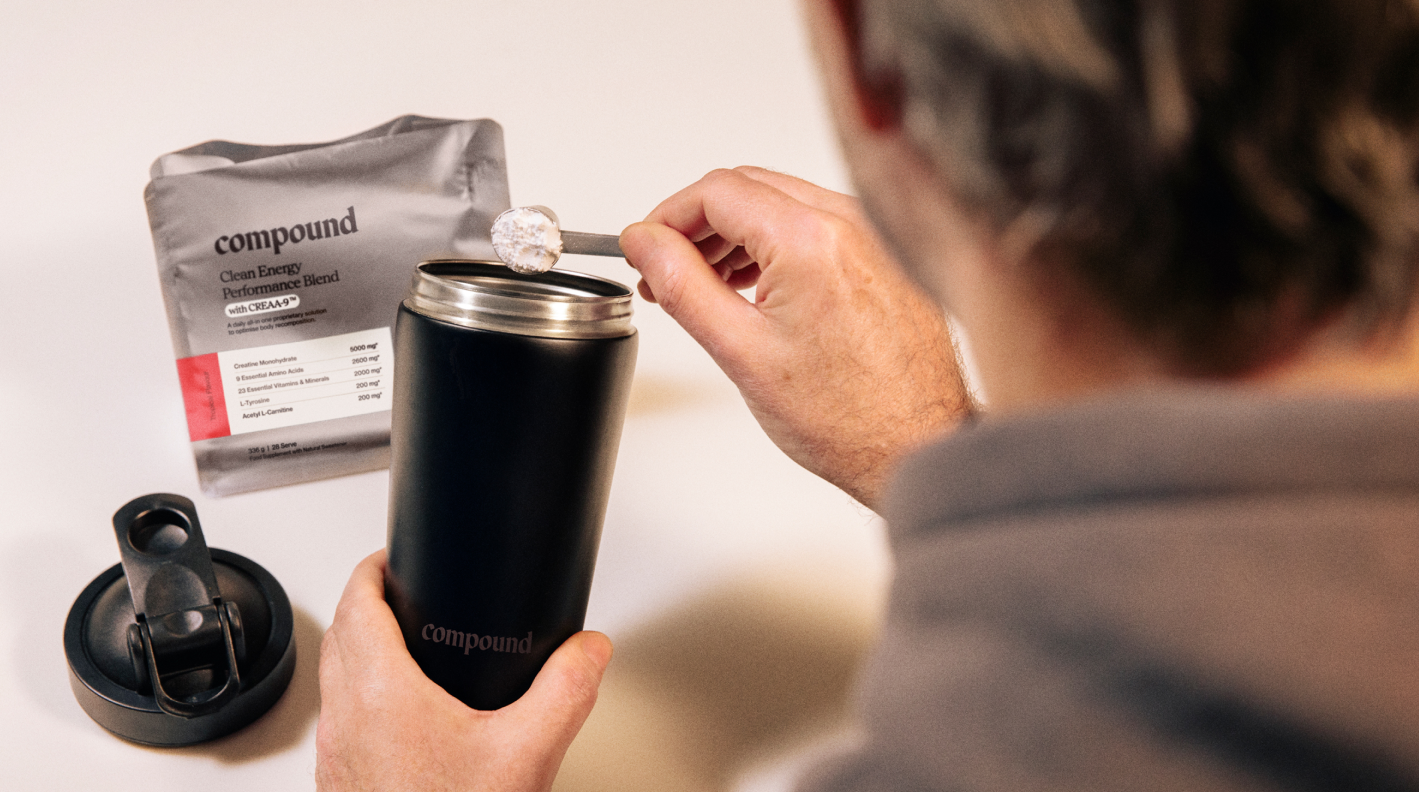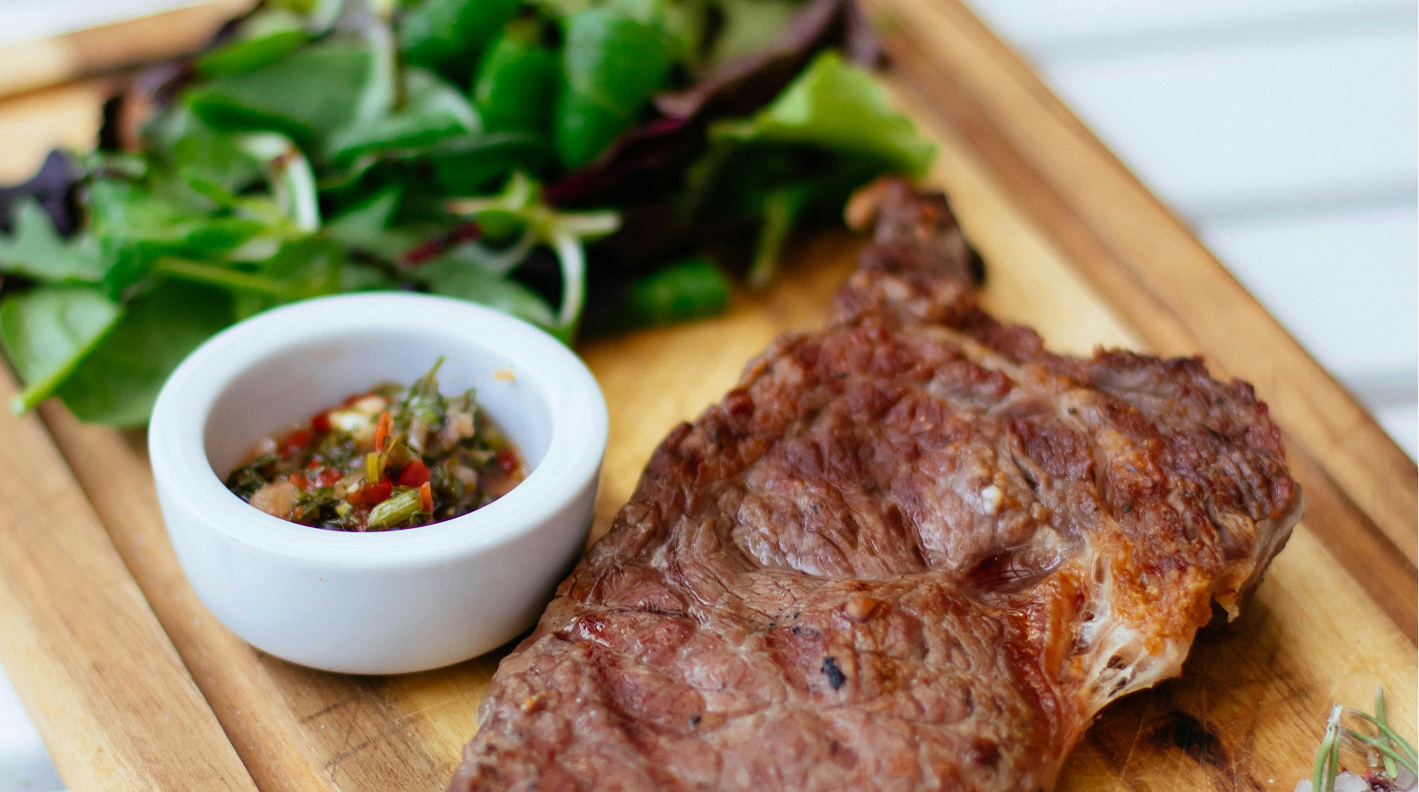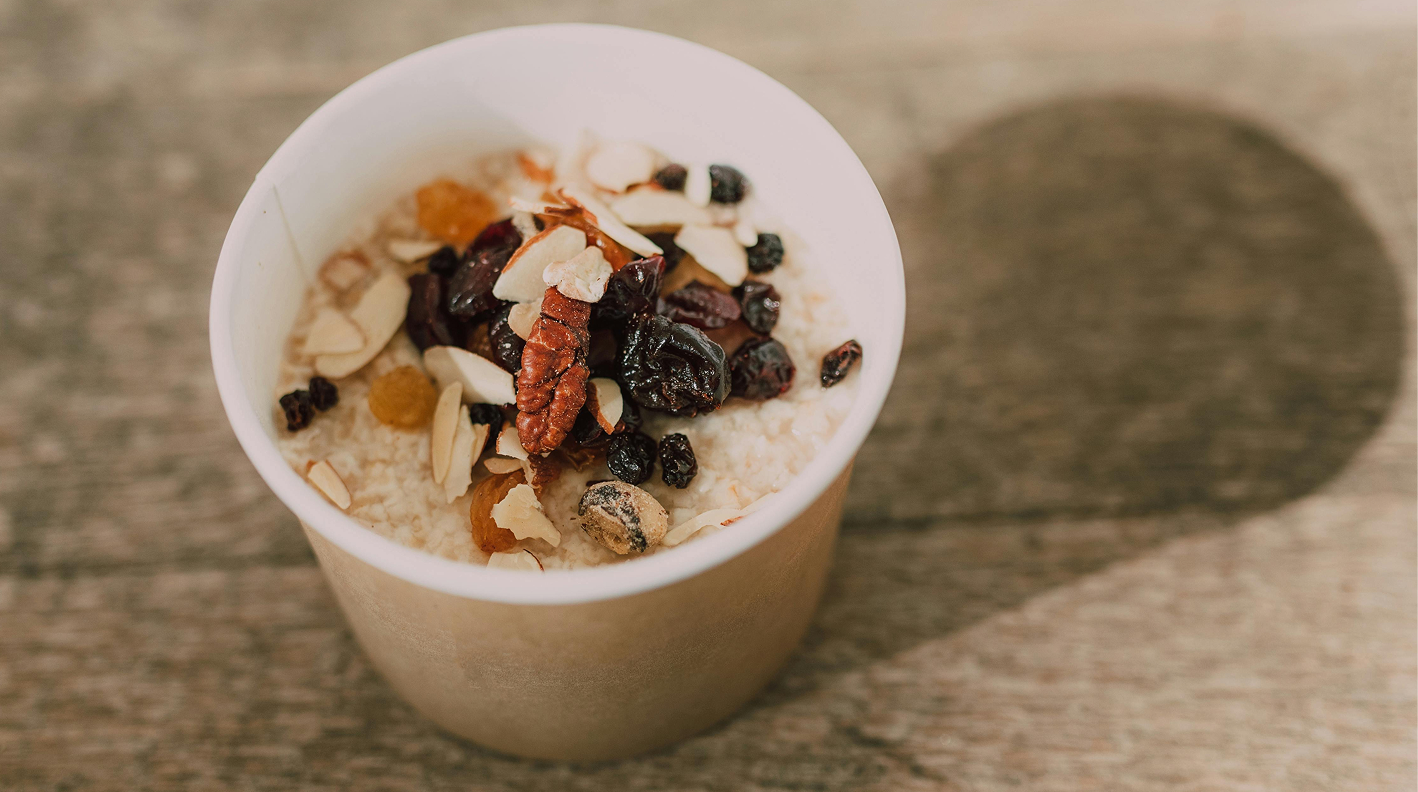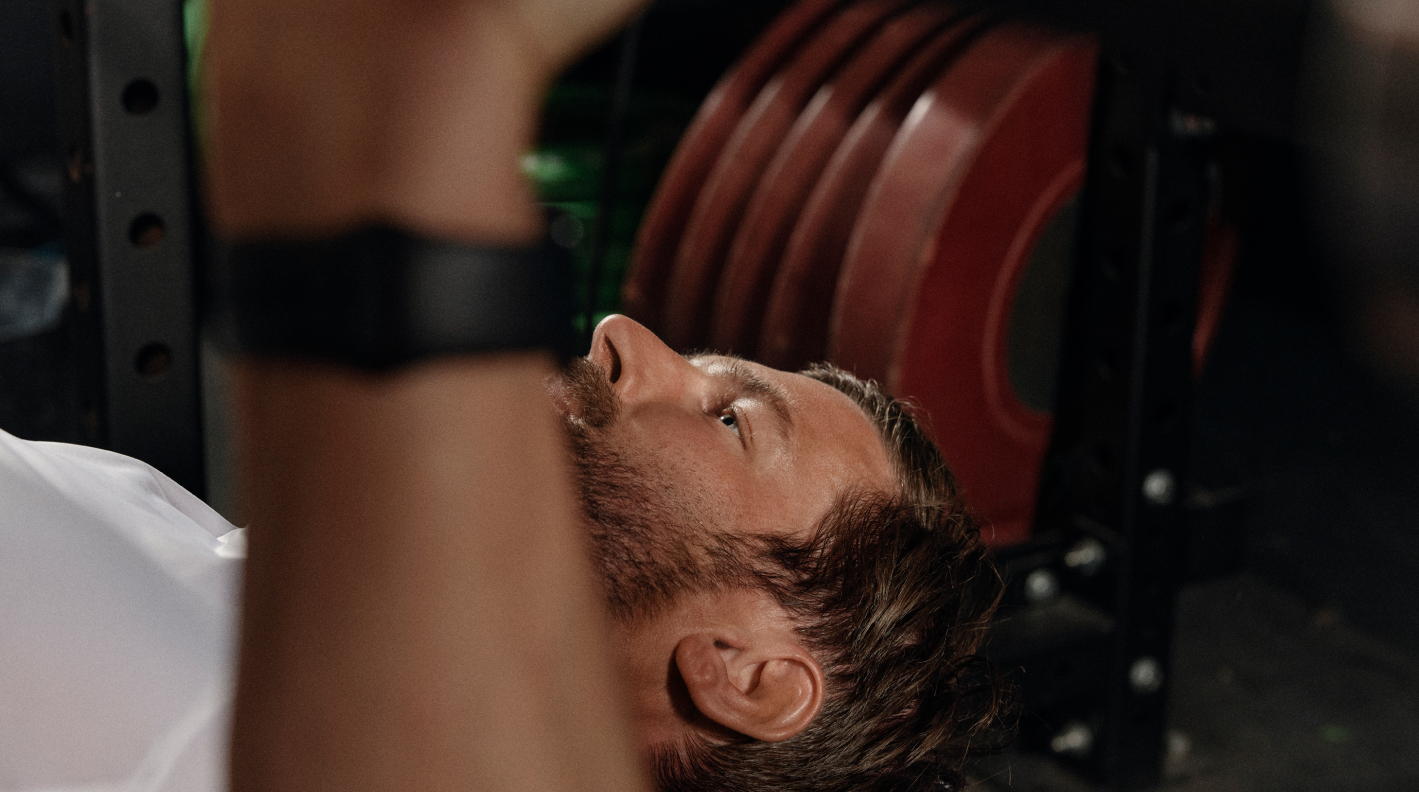Beyond supplements: A guide to creatine-rich foods

Key takeaways
- Creatine is a natural substance found in muscles, the brain, and the testes, which enhances energy and performance during high-intensity activities. Beyond improving exercise performance, it aids in faster recovery, injury rehabilitation, better brain function, and may reduce the risks of mental health issues like depression.
- Adults need 1-3 grams of creatine daily, which can be replenished through natural body synthesis or dietary intake. While animal-based foods like fish (e.g., herring, tuna) and meats (e.g., beef, chicken) are rich in creatine, plant foods provide amino acids required for its production.
- For individuals requiring higher creatine levels, such as athletes, supplements like creatine monohydrate can increase muscle stores by 20-40%. However, natural dietary sources often suffice for maintaining baseline health, with proper care to avoid overcooking creatine-rich foods.
Creatine is among the most popular performance-enhancer supplements in the world, so you've probably heard of it before.
You might know all about how it works, what it's used for, and how much you need each day. Or you might be a beginner looking for a deep dive into all things creatine and health.
Either way, you've come to the right place. This article is a comprehensive overview of creatine, including:
- How to maintain an adequate creatine supply
- Everything to know about creatine supplements
- 10 foods to increase dietary creatine
- The top plant-based foods for creatine synthesis
What is creatine?
Creatine is a substance that occurs naturally in the body. It is found in [1][3][5]:
- Your skeletal muscles (the ones connected to your bones)
- Your brain
- And your testes
In scientific terms, creatine is known as an ergogenic acid, which is a compound that enhances performance. In casual terms, we usually refer to these as supplements [7].
The main purpose of creatine is to give your muscles energy when they need it — such as during an intense workout. The more creatine you have in your body, the more energy your muscles will have to draw from [3].
Creatine was discovered in 1832 by a French scientist and creatine supplementation was first tested in the early 1900s [5].
By the 1990s, research into creatine had increased massively. Today, there are thousands of studies on creatine consumption, how it works, and what it can do for your body.
The health benefits of creatine
The most studied benefit of creatine is how it can help improve exercise performance, but that’s not all it’s good for. Here are 5 health benefits of creatine you should know.
Enhancing exercise performance
Let’s start with the obvious one — creatine is well-researched as a compound that improves performance during a workout. It’s particularly effective for high-intensity exercise and increasing lean muscle mass [1].
Some studies suggest that performance can increase by 10-20% for people taking creatine supplements [4]. These benefits have been found across sports; from weight training to swimming, running, soccer, golf, and more.
There is also evidence that creatine can help you train effectively in the heat. Several studies have found that creatine helps with a state known as hyper-hydration [1].
In simple terms, hyper-hydration means your body holds water which can then be used during exercise to stay hydrated. By storing water, your body will be better able to handle exercise in hot and humid conditions.
Faster recovery post-exercise
The saying might be ‘no pain, no gain’ — but that doesn’t mean you have to be couch-bound after every intense training session. Research is now pointing to creatine as a supplement that can help your muscles recover after exercise (yes, even for leg day).
The main theory right now is that creatine can help your body reduce inflammation, which means your muscle tissue can recover faster [1].
To put it another way, if creatine helps your body tolerate high-intensity training better; then you have less to recover from.
Injury rehabilitation
Since creatine is known to be good for strength and muscle growth, researchers are also looking at how it could help people recover from an injury.
Studies so far have shown that people who used creatine during rehabilitation were able to regain their strength faster than those who didn’t [1].
Brain health
While most of your natural creatine is found in the skeletal muscles, a small amount is also in the brain. Experts are now looking at whether increasing creatine could have positive effects on your cognitive function.
Some of the potential benefits for brain health include [1][3]:
- Reducing mental fatigue
- Improvements to working memory and intelligence
- Minimising the negative effects of sleep deprivation; such as poor reaction times, lack of balance and mood swings
Mental health
It’s not just your brain function that could be helped by higher creatine levels, but your emotional state too. In a study from the US, researchers looked for links between dietary intake of creatine and depression [6].
They found that having low creatine levels could increase the risk of depression by up to 42%. Even once they adjusted the data for demographic and lifestyle factors — such as age, body weight, and physical activity — the link remained.
How much creatine do you need each day?
Your body uses around 1-2% of its natural creatine stores every day. This means you need to keep replenishing it for optimal health. A daily intake of around 1-3 grams of creatine is recommended for normal functioning [1].
There are 2 ways to get creatine naturally [7]:
- Your kidney and liver can make creatine from 3 amino acids; arginine, glycine and methionine
- You can get dietary creatine from animal-based foods
In general, these natural creatine sources are enough to keep your body at healthy levels. People with a lot of muscle mass or who are highly active can burn through more than 1-2% of their natural creatine, which means their daily needs could be increased [4].
For these people, it might be worth adding synthetic creatine supplements to their routine.
Natural creatine vs creatine supplements
As we mentioned earlier, natural creatine comes from 2 sources — your liver and kidneys or your diet. In general, these natural forms are enough for the average adult to get 1-3 grams of creatine each day [3].
This should also allow your muscles to reach 60-80% of their capacity for creatine storage [1]. But, if you want to increase muscle creatine stores by 20-40%, it’s typically recommended to use creatine supplements.
Creatine supplementation is especially helpful for active adults, who require closer to 5-10 grams of creatine each day. It’s not easy to get this much from diet alone. To put it in perspective, you would need to eat 1kg of steak to get 5 grams of dietary creatine [3].
So, if you’re considering supplements, which kind should you take?
Comparing creatine supplements
If you’ve ever looked at taking a creatine supplement, you might have been surprised by how many different types there are.
According to experts, the gold standard is creatine monohydrate. This kind of supplemental creatine is often used in studies, so we have plenty of evidence that it works and is safe [2].
Some research shows other forms like creatine salts, creatine citrate, and creatine nitrate do work — though there is nothing to suggest they are more effective than creatine monohydrate [4].
Finally, some forms — such as creatine serum — have little to no evidence that they are even effective.
It can be hard figuring all of this out on your own, which is part of the reason we created Compound. Compound's Body Transformation Programme combines medical treatments, prescriber support and personalised guidance to help you not just lose weight but completely transform your body and health for life.
- Breakthrough medication: Lose up to 21% of your body weight in 72 weeks with once-weekly, clinically proven treatment. It keeps you feeling fuller for longer, so eating less feels natural. Pair them with the Compound Code to lock results in for good.
- Compound Code: Our medication creates opportunity — Compound helps you seize it. Our proven system makes your treatment work harder. The Compound Code builds the muscle, energy, and fitness that medication alone can't deliver. Our holistic approach transforms not just how you look, but how you feel and function daily. So when you eventually finish treatment, your results don't disappear with it.
Are creatine supplements safe?
We know from repeated research that taking creatine monohydrate is safe. It can be taken over the long-term, with studies completed for up to 5 years, and in doses up to 30 grams [1][3].
While we have the research to say it’s safe, some people do report side effects such as bloating, cramping or nausea [3].
If you experience any side effects after taking a new supplement or making changes to your diet, it’s a good idea to chat with your doctor.
It’s also important to check the quality of a supplement before using it. Not all creatine supplements are made the same, with some processing methods leaving behind risky substances like heavy metals or dihydrotriazine — which could lead to negative health effects over time [2].
It's recommended to source German creatine supplements as these use a processing method that achieves 99.9% pure creatine monohydrate and no contaminants.
10 foods with creatine
Whether you’re combining diet with supplements or looking to increase your creatine intake naturally, everyone can benefit from these foods with creatine.
The best natural sources are animal-based foods — primarily meat and fish. Here are 10 foods to add to your plate — plus, creatine estimates based on a standard serving of 90 grams of meat and 140 grams of fish [9].
Bonus tip: Be wary of overcooking as this can reduce or even eliminate the creatine in most foods. For example, a well-done steak has lost most of its creatine content [7].
1. Cod
Craving fish and chips? This staple of the local menu is packed full of creatine with 2.85 grams per kilogram — or about 0.4 grams of creatine per serve [6].
2. Herring
There’s nothing red about this herring. This soft and flaky fish is a great source of creatine with 7.84 grams per kilogram — or about 1 gram of creatine per serve [6].
3. Salmon
We think this delicious fish should be on your weekly menu. It has 4.28 grams of creatine per kilogram — which is about 0.6 grams per serve [6].
4. Tuna
Who doesn’t love a tuna sandwich? It’s not just tasty, it’s also packed full of creatine with around 4.96 grams per kilogram – or about 0.7 grams of creatine per serve [6].
5. Beef
From ribs to rump steak, sirloin to strip — every cut of beef is a hero when it comes to creatine. In general, beef has around 4.85 grams of creatine per kilogram — which is just under 0.5 grams per serve [6].
6. Lamb
Don’t forget about the other red meat. Roast up a rack of lamb and you could be enjoying a side of creatine too. Lamb has around 4.13 grams of creatine per kilogram — which is about 0.4 grams per serve [6].
7. Chicken
Prefer lean meat? You can’t go wrong with chicken. It has around 4.19 grams of creatine per kilogram — which is about 0.4 grams per serve [6].
8. Turkey
Turkey is more than a festive feast — it’s a top choice for its lean protein, low fat and solid creatine content. Turkey has around 3.55 grams of creatine per kilogram — or about 0.3 grams per serve [6].
9. Bacon
Look, we know bacon isn’t the healthiest meat out there, but the occasional treat is worth it. Plus, bacon has around 3 grams of creatine per kilogram — which is about 0.3 grams per serve [6].
10. Pork
Choosing a lean cut of pork — like the fillet, loin or leg – can be better for your health while still packing in the creatine. Most pork has around 4.69 grams of creatine per kilogram, which is just under 0.5 grams per serve [6].
6 plant-based foods that support creatine production
We have good news and bad news. The bad news is, plant-based foods do not contain creatine [5]. But the good news is, many of them do contain the 3 amino acids that allow your kidney and liver to make creatine [8].
By eating plenty of plant-based foods with all the right amino acids, you’re giving your body everything it needs to keep creating creatine. Here are 5 plant-based foods to look out for [8]:
- Nuts: Brazil nuts have methionine, butternuts have glycine; while pine nuts, almonds, walnuts, and peanuts all contain arginine.
- Seeds: Sesame seeds contain all 3 amino acids, while pumpkin seeds have arginine and watermelon seeds contain both arginine and glycine.
- Legumes: Many legumes, such as white beans and peas, are a top source of all 3 amino acids required for creatine production.
- Soy products: Like legumes, soy products from tofu to yoghurt contain all 3 amino acids needed to create creatine.
- Spirulina: This blue-green algae often comes in powdered form and contains all 3 amino acids that your body needs to make creatine.
- Quinoa: A bowl of cooked quinoa will give you a good dose of both glycine and arginine.
Creatine is among the most popular performance-enhancer supplements in the world, so you've probably heard of it before.
You might know all about how it works, what it's used for, and how much you need each day. Or you might be a beginner looking for a deep dive into all things creatine and health.
Either way, you've come to the right place. This article is a comprehensive overview of creatine, including:
- How to maintain an adequate creatine supply
- Everything to know about creatine supplements
- 10 foods to increase dietary creatine
- The top plant-based foods for creatine synthesis
What is creatine?
Creatine is a substance that occurs naturally in the body. It is found in [1][3][5]:
- Your skeletal muscles (the ones connected to your bones)
- Your brain
- And your testes
In scientific terms, creatine is known as an ergogenic acid, which is a compound that enhances performance. In casual terms, we usually refer to these as supplements [7].
The main purpose of creatine is to give your muscles energy when they need it — such as during an intense workout. The more creatine you have in your body, the more energy your muscles will have to draw from [3].
Creatine was discovered in 1832 by a French scientist and creatine supplementation was first tested in the early 1900s [5].
By the 1990s, research into creatine had increased massively. Today, there are thousands of studies on creatine consumption, how it works, and what it can do for your body.
The health benefits of creatine
The most studied benefit of creatine is how it can help improve exercise performance, but that’s not all it’s good for. Here are 5 health benefits of creatine you should know.
Enhancing exercise performance
Let’s start with the obvious one — creatine is well-researched as a compound that improves performance during a workout. It’s particularly effective for high-intensity exercise and increasing lean muscle mass [1].
Some studies suggest that performance can increase by 10-20% for people taking creatine supplements [4]. These benefits have been found across sports; from weight training to swimming, running, soccer, golf, and more.
There is also evidence that creatine can help you train effectively in the heat. Several studies have found that creatine helps with a state known as hyper-hydration [1].
In simple terms, hyper-hydration means your body holds water which can then be used during exercise to stay hydrated. By storing water, your body will be better able to handle exercise in hot and humid conditions.
Faster recovery post-exercise
The saying might be ‘no pain, no gain’ — but that doesn’t mean you have to be couch-bound after every intense training session. Research is now pointing to creatine as a supplement that can help your muscles recover after exercise (yes, even for leg day).
The main theory right now is that creatine can help your body reduce inflammation, which means your muscle tissue can recover faster [1].
To put it another way, if creatine helps your body tolerate high-intensity training better; then you have less to recover from.
Injury rehabilitation
Since creatine is known to be good for strength and muscle growth, researchers are also looking at how it could help people recover from an injury.
Studies so far have shown that people who used creatine during rehabilitation were able to regain their strength faster than those who didn’t [1].
Brain health
While most of your natural creatine is found in the skeletal muscles, a small amount is also in the brain. Experts are now looking at whether increasing creatine could have positive effects on your cognitive function.
Some of the potential benefits for brain health include [1][3]:
- Reducing mental fatigue
- Improvements to working memory and intelligence
- Minimising the negative effects of sleep deprivation; such as poor reaction times, lack of balance and mood swings
Mental health
It’s not just your brain function that could be helped by higher creatine levels, but your emotional state too. In a study from the US, researchers looked for links between dietary intake of creatine and depression [6].
They found that having low creatine levels could increase the risk of depression by up to 42%. Even once they adjusted the data for demographic and lifestyle factors — such as age, body weight, and physical activity — the link remained.
How much creatine do you need each day?
Your body uses around 1-2% of its natural creatine stores every day. This means you need to keep replenishing it for optimal health. A daily intake of around 1-3 grams of creatine is recommended for normal functioning [1].
There are 2 ways to get creatine naturally [7]:
- Your kidney and liver can make creatine from 3 amino acids; arginine, glycine and methionine
- You can get dietary creatine from animal-based foods
In general, these natural creatine sources are enough to keep your body at healthy levels. People with a lot of muscle mass or who are highly active can burn through more than 1-2% of their natural creatine, which means their daily needs could be increased [4].
For these people, it might be worth adding synthetic creatine supplements to their routine.
Natural creatine vs creatine supplements
As we mentioned earlier, natural creatine comes from 2 sources — your liver and kidneys or your diet. In general, these natural forms are enough for the average adult to get 1-3 grams of creatine each day [3].
This should also allow your muscles to reach 60-80% of their capacity for creatine storage [1]. But, if you want to increase muscle creatine stores by 20-40%, it’s typically recommended to use creatine supplements.
Creatine supplementation is especially helpful for active adults, who require closer to 5-10 grams of creatine each day. It’s not easy to get this much from diet alone. To put it in perspective, you would need to eat 1kg of steak to get 5 grams of dietary creatine [3].
So, if you’re considering supplements, which kind should you take?
Comparing creatine supplements
If you’ve ever looked at taking a creatine supplement, you might have been surprised by how many different types there are.
According to experts, the gold standard is creatine monohydrate. This kind of supplemental creatine is often used in studies, so we have plenty of evidence that it works and is safe [2].
Some research shows other forms like creatine salts, creatine citrate, and creatine nitrate do work — though there is nothing to suggest they are more effective than creatine monohydrate [4].
Finally, some forms — such as creatine serum — have little to no evidence that they are even effective.
It can be hard figuring all of this out on your own, which is part of the reason we created Compound. Compound's Body Transformation Programme combines medical treatments, prescriber support and personalised guidance to help you not just lose weight but completely transform your body and health for life.
- Breakthrough medication: Lose up to 21% of your body weight in 72 weeks with once-weekly, clinically proven treatment. It keeps you feeling fuller for longer, so eating less feels natural. Pair them with the Compound Code to lock results in for good.
- Compound Code: Our medication creates opportunity — Compound helps you seize it. Our proven system makes your treatment work harder. The Compound Code builds the muscle, energy, and fitness that medication alone can't deliver. Our holistic approach transforms not just how you look, but how you feel and function daily. So when you eventually finish treatment, your results don't disappear with it.
Are creatine supplements safe?
We know from repeated research that taking creatine monohydrate is safe. It can be taken over the long-term, with studies completed for up to 5 years, and in doses up to 30 grams [1][3].
While we have the research to say it’s safe, some people do report side effects such as bloating, cramping or nausea [3].
If you experience any side effects after taking a new supplement or making changes to your diet, it’s a good idea to chat with your doctor.
It’s also important to check the quality of a supplement before using it. Not all creatine supplements are made the same, with some processing methods leaving behind risky substances like heavy metals or dihydrotriazine — which could lead to negative health effects over time [2].
It's recommended to source German creatine supplements as these use a processing method that achieves 99.9% pure creatine monohydrate and no contaminants.
10 foods with creatine
Whether you’re combining diet with supplements or looking to increase your creatine intake naturally, everyone can benefit from these foods with creatine.
The best natural sources are animal-based foods — primarily meat and fish. Here are 10 foods to add to your plate — plus, creatine estimates based on a standard serving of 90 grams of meat and 140 grams of fish [9].
Bonus tip: Be wary of overcooking as this can reduce or even eliminate the creatine in most foods. For example, a well-done steak has lost most of its creatine content [7].
1. Cod
Craving fish and chips? This staple of the local menu is packed full of creatine with 2.85 grams per kilogram — or about 0.4 grams of creatine per serve [6].
2. Herring
There’s nothing red about this herring. This soft and flaky fish is a great source of creatine with 7.84 grams per kilogram — or about 1 gram of creatine per serve [6].
3. Salmon
We think this delicious fish should be on your weekly menu. It has 4.28 grams of creatine per kilogram — which is about 0.6 grams per serve [6].
4. Tuna
Who doesn’t love a tuna sandwich? It’s not just tasty, it’s also packed full of creatine with around 4.96 grams per kilogram – or about 0.7 grams of creatine per serve [6].
5. Beef
From ribs to rump steak, sirloin to strip — every cut of beef is a hero when it comes to creatine. In general, beef has around 4.85 grams of creatine per kilogram — which is just under 0.5 grams per serve [6].
6. Lamb
Don’t forget about the other red meat. Roast up a rack of lamb and you could be enjoying a side of creatine too. Lamb has around 4.13 grams of creatine per kilogram — which is about 0.4 grams per serve [6].
7. Chicken
Prefer lean meat? You can’t go wrong with chicken. It has around 4.19 grams of creatine per kilogram — which is about 0.4 grams per serve [6].
8. Turkey
Turkey is more than a festive feast — it’s a top choice for its lean protein, low fat and solid creatine content. Turkey has around 3.55 grams of creatine per kilogram — or about 0.3 grams per serve [6].
9. Bacon
Look, we know bacon isn’t the healthiest meat out there, but the occasional treat is worth it. Plus, bacon has around 3 grams of creatine per kilogram — which is about 0.3 grams per serve [6].
10. Pork
Choosing a lean cut of pork — like the fillet, loin or leg – can be better for your health while still packing in the creatine. Most pork has around 4.69 grams of creatine per kilogram, which is just under 0.5 grams per serve [6].
6 plant-based foods that support creatine production
We have good news and bad news. The bad news is, plant-based foods do not contain creatine [5]. But the good news is, many of them do contain the 3 amino acids that allow your kidney and liver to make creatine [8].
By eating plenty of plant-based foods with all the right amino acids, you’re giving your body everything it needs to keep creating creatine. Here are 5 plant-based foods to look out for [8]:
- Nuts: Brazil nuts have methionine, butternuts have glycine; while pine nuts, almonds, walnuts, and peanuts all contain arginine.
- Seeds: Sesame seeds contain all 3 amino acids, while pumpkin seeds have arginine and watermelon seeds contain both arginine and glycine.
- Legumes: Many legumes, such as white beans and peas, are a top source of all 3 amino acids required for creatine production.
- Soy products: Like legumes, soy products from tofu to yoghurt contain all 3 amino acids needed to create creatine.
- Spirulina: This blue-green algae often comes in powdered form and contains all 3 amino acids that your body needs to make creatine.
- Quinoa: A bowl of cooked quinoa will give you a good dose of both glycine and arginine.
- https://pmc.ncbi.nlm.nih.gov/articles/PMC5469049/
- https://pmc.ncbi.nlm.nih.gov/articles/PMC7871530/
- https://theconversation.com/creatine-supplements-what-the-research-says-about-how-they-can-help-you-get-in-shape-197260
- https://pmc.ncbi.nlm.nih.gov/articles/PMC8912867/
- https://www.sciencedirect.com/science/article/pii/S1756464621002176
- https://www.nature.com/articles/s41398-020-0741-x
- https://www.researchgate.net/publication/227249571_Nutritional_Supplements_for_Endurance_Athletes
- https://bestfornutrition.com/creatine-for-vegan/
- https://www.cntw.nhs.uk/wp-content/uploads/2017/10/Daily-planner-and-portion-guide.pdf












